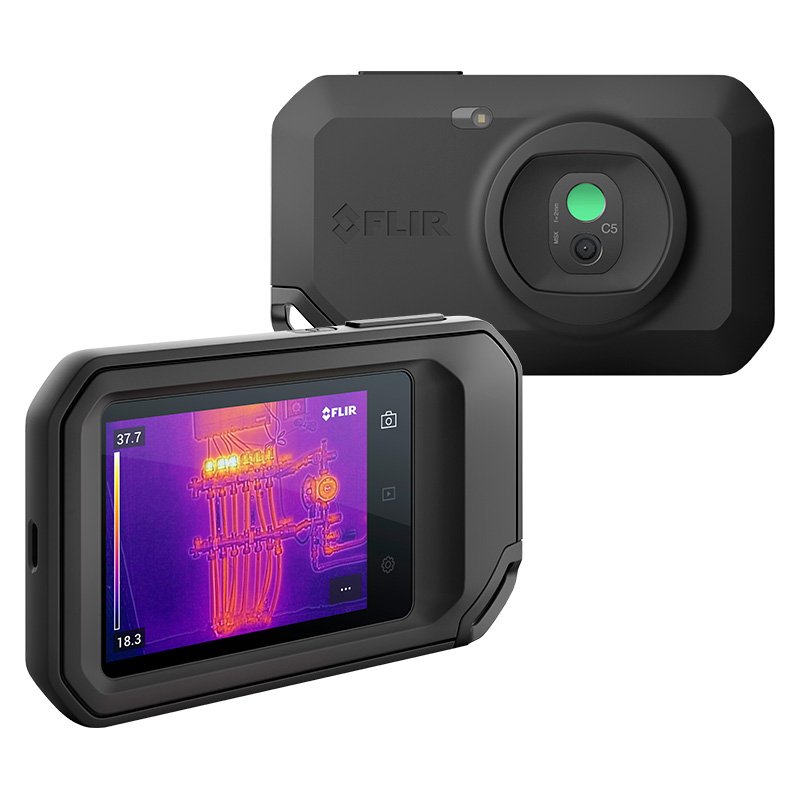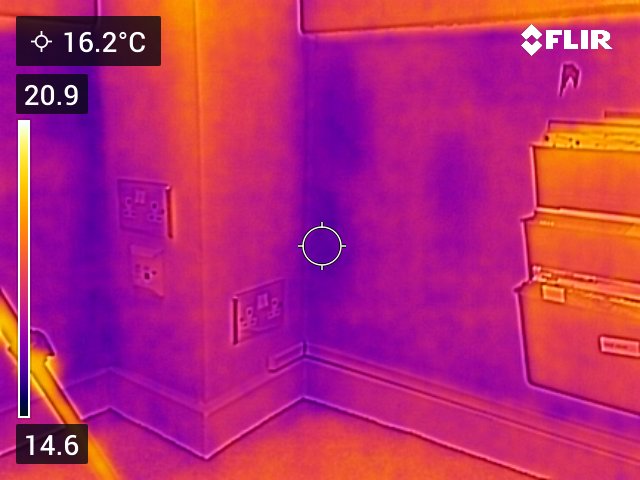
Globally, heating domestic and commercial buildings ‘accounts for nearly half of all energy consumption and 40% of energy-related carbon dioxide emissions.'[1] Approximately 19% of the UK’s greenhouse gas emissions can be attributed to warming houses and workplaces, with more than three-quarters of these emissions coming from domestic dwellings.[2] Ensuring that buildings are suitably insulated and appropriately air-tight can reduce heat loss, thereby improving energy efficiency, decreasing greenhouse gas emissions, and minimising property owners’ carbon footprints.
Thermal imaging cameras, such as Teledyne FLIR’s C5 Compact Thermal Camera, provide a non-invasive method of assessing heat loss, faulty insulation, and thermal bridges.

They capture infrared energy and convert this into an easy-to-interpret heat map, allowing users to identify sources of energy inefficiency, such as inadequate insulation, draughts, and damp, quickly and easily.




Cambridge Carbon Footprint, a charity dedicated to raising awareness of climate change and helping people achieve low carbon living, runs a training and camera loan scheme designed to help people identify and address energy efficiency issues in their homes and workplaces. By providing thermography training, as well as a loaned Fluke TiR, Fluke TiR105, or FLIR C5 Thermal Camera, Cambridge Carbon Footprint helps people to see energy leakage. The charity hopes that by making heat loss visible property owners will be motivated to make the building improvements required to prevent energy wastage. Cambridge Carbon Footprint points out that by addressing issues such as draught, damp, and faulty insulation, individuals can reduce both their carbon emissions and energy bills while benefitting from significant improvements in comfort.[3] For more information about Cambridge Carbon Footprint’s work and their training and camera loan scheme, please visit their website.
For further information please contact our sales team on 01642 931 329 or via our online form.
[1] BBC, How to cut carbon out of your heating, last accessed 05 January 2022
[2] BBC, How to cut carbon out of your heating, last accessed 05 January 2022
[3] Cambridge Carbon Footprint, Thermal imaging, last accessed 05 January 2022


